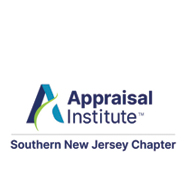NOTE: This is 1 of 4 courses being offered on June 10th & 11th.
- Click here to register for all 4 courses
- Download a printable PDF course description and registration form
Seminar Objectives
This program will assist the attendees in gaining a better understanding of the strengths and weaknesses of the real estate, either man-made or naturally occurring. Valuation nuances will be addressed, especially when the Subject and/or the competitive sales involve limited utility features. USPAP establishes minimum requirements for an appraisal and the practitioner’s need for competency will be stressed. The program will offer insight into recognizing, understanding, and evaluating physical characteristics and legal controls that impact many assignments. It will be stressed that a practitioner should seek to exceed the minimum requirements thereby better serving their clients and intended users.
The program will review industry approved and peer tested methods and techniques when encountering unique features. Knowing what to look for when inspecting a property or reviewing third party data such as zoning maps and MLS fact sheets will enhance the use of tools available to the appraiser to answer a client’s question. The goal is for attendees to gain insight into property nuances. Better understanding should result in a better analysis that leads to supportable conclusion(s) and opinion(s). This will be accomplished by:
- Recognizing the measurement utility which ultimately impacts value.
- Recognizing that appraisals are not simply to justify a deal on the table.
- The practitioner must possess and is responsible for evaluating his/her own competency.
- Identify and summarize different types of limited utility features that may be encountered.
- Stress that market evidence is required to support opinions and conclusions.
- Suggest techniques to evaluate the critical issues noted in a property.
- Discuss the differences between excess and surplus land.
- Recognize the need for a well documented and supported highest and best use.
- Briefly discuss how critical issues are addressed in all three approaches to value.
- Stress the need for reconciliation throughout the appraisal.
To be credible, an appraisal should be well documented using applicable market data relevant to the client’s appraisal question. Data needs to be factual. The skill to identify critical features rests with the appraiser and education and experience are core underpinnings of competency. Today, there are various software programs available to assist the appraiser but they do not replace the need for well thought out analysis. The depth of support often lie in the extent of the critical issue within the property being valued. Every appraisal may be challenging and it’s the appraiser’s responsibility to be ready for the challenge. Critical features impact the real estate’s use and appeal in the market to varying degrees. It is the valuers task to identify such features and evaluate how, if at all, they impact value.
This program will challenge both new as well as seasoned practitioners. It will be a guide to a meaningful understanding of features that impact real property rights and value. Concepts discussed will be consistent with the intent of Uniform Standards of Professional Appraisal Practice and Interagency Appraisal and Evaluation Guidelines. This educational program will assist the certified, licensed, and registered appraiser to gain a better understanding of how the typical buyer develops a price to be paid.
A rudimentary understanding of appraisal theory is expected. The topics and general discussion within this program will facilitate attendees in gaining a better understanding of when and how critical features impact use of real estate and ultimately the prices paid. A better understanding should lead to reasonable and credible opinions. A better understanding benefits both the practitioner and their clients while strengthening the industry and protecting the general public. Educational awareness is enhanced by an active presentation format which involves attendee participation and the use of straight forward examples. A safe environment will be fostered to encourage questions, test accepted procedures and find alternatives when needed.
Handout: Brief syllabus & student handout
Outline
5 minutes
- Introduction
- Overview of the program
10 minutes
- Examples of strengths and weakness encountered
- Challenges in improved and land valuation assignments
- Types of limited utility areas
15 minutes
- Appraisal principles
- Assumptions and Conditions
- Components of a market
10 minutes
- Benefits and offsets of critical issues
- Markets for limited utility land
10 minutes
- Physical characteristics of the underlying land
- Overview of legal controls
10 minutes Break
5 minutes
- Strengths enhance value while weaknesses may detract from value
- Prices paid reflect all component parts.
- The task: identify and quantify contributory values within the whole.
15 minutes
- Competency is essential in all valuation assignments
- Definition of wetlands and terms commonly used to describe wetlands
- Factors contributing to wetland formations
10 minutes
- Detention ponds are man made while creeks and tributaries are natural occurrences.
- Guidelines to determine wetlands
- What is a 404 Permit and who issues them?
10 minutes
- Types of wetlands
- Tidal and non-tidal wetlands
10 minutes
- Flood plains and FEMA maps
- Overview of hydric soils – major and minor inclusions
10 minutes Break
15 minutes
- Example using Arcview software – technology to define physical characteristics
- Availability of GIS information in county assessment offices
- Using it to help define the physical real estate.
10 minutes
- Use of Extraordinary assumptions and/or Hypothetical conditions
10 minutes
- Surplus land and excess land
15 minutes
- How to allocate a sale price to quantify strengths and weaknesses
- Understanding the concept of utility and how it is related to value.
- Examples when estimating utility and density potential
10 minutes
- Summation of concepts discussed in the program
Question and Answers
